Gartner has positioned multiexperience amongst the top
technology trends of 2020.
So, the question that comes to your mind must be – what is multiexperience?
Before I answer that, have a closer look at these brands.

Don’t you feel more connected to these brands?
Have you thought why?
Most probably because you interact with these brands in numerous ways. It might be through smartphones, laptops, tablets, or smartwatches.
In this digital era, these physical devices bring to you different flavors of digital experience through voice, audio, video, bots, Augmented, or Virtual reality.
The digital experiences we have with these devices contributes to our perception of these brands in this customer centric world.
In the race of creating a positive brand image and perception, enterprises are looking for ways to strengthen their digital experience. That can only be done by streamlining their user’s experience across multiple platforms.
Understanding multiexperience in a digital realm
As per Gartner, multiexperience is about leveraging various modalities, digital touchpoints, apps, and devices to design and develop a seamless experience for the customers. The idea is to interact with the customers at as many touchpoints as possible to offer a consistent customer experience across the web, mobile, app, and other modalities.

Let’s understand this in a simpler way.
Gartner in its research found out that enterprises face an intensifying challenge to create digital customer experiences that go beyond those delivered through web and mobile apps.
Since data has become enormously accessible and is being “consumed” in various ways like hands-free, mobile, voice, etc., ease to use and personalization are now the key elements of great user experience.
Did you get the point?
That’s the reason why enterprises are switching from mobile-focused app development to a multiexperience app development strategy.
The key lies in future-proofing your apps by “injecting” them with multiexperiences.
So, the next question in your mind must be how do you develop apps that are seamlessly adjusted to each channel, each user interaction modality, or adapted to customer needs?
With an all-in-one technologies – multiexperience development platform (MXDP)
MXDP helps enterprises to rapidly scale their applications across a range of devices and platforms. MXDPs can help you develop a single application that can be deployed on a variety of devices. This greatly shortens down your efforts and gives brands more control over their digital experiences.
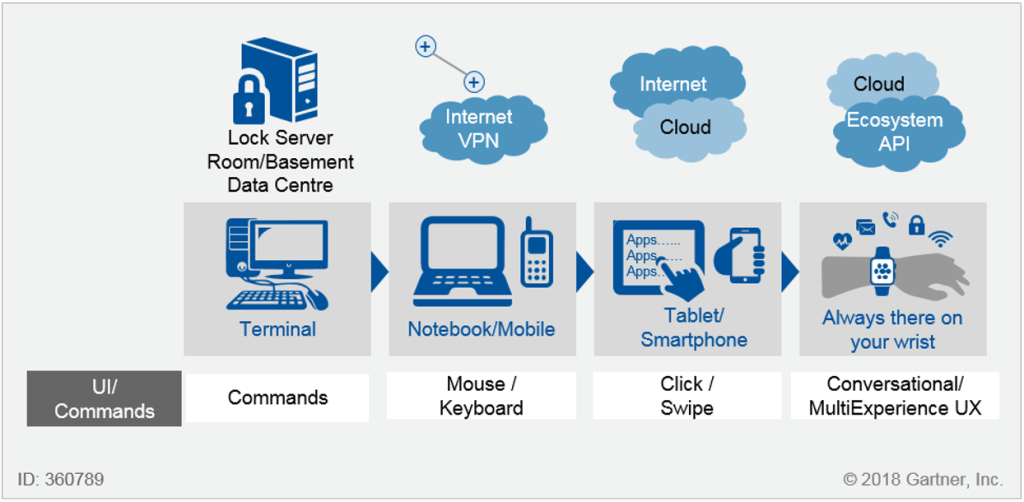
Now let’s move on to understand the evolution from MADP to MXDP
Earlier, MADP has served as a pivotal technology platform to help with the unification of mobile and web development.
Gartner now sees that these platforms are morphing to enable multiple experiences, including augmented reality, chatbots, voice interactions, and wearables.

In short, a multiexperience platform and mindset can satisfy the demands of the “everything customer”. This is the need of the hour.
As per the analyst, the multiexperience trend will replace technology-literate people with people-literate technology.
Instead of people getting accustomed to the evolving technologies, it will so happen that the technology will evolve to understand the people better.
Here are some more top reasons why enterprises are moving towards MXDPs –
1. Offer internal operational efficiencies
MXDPs help enterprises with a central, interconnected system incorporates and thus streamlines all your internal processes. It solves the problem of struggling to orchestrate a heavy network of various programs, one for each type of day-to-day internal task.
2. Reduce Time to Market for Mobile Apps
MXDPs can considerably improve development time by as much as 10x with the use of reusable code and streamlined design processes. This can lead to faster releases and shorter feedback cycles.
3. Better Control over Actual Deployment
It takes a week to conduct a single cloud-based deployment. But with the right MXDP, information can be directly sent to your cloud-based service provider. In addition to that, MXDPs are also going to provide a full-distributed environment providing more efficiency by streamlining the deployment process.
4. Eliminate potential security Risk
With your application feeding on a single platform like MXDPs, you can get a 360 view of your software landscape. This can eliminate all the potential security risks that many organizations struggle with.
If we look at an example, here’s a brand that is leading the MXDP race –
Domino’s Anyware™
It has given the flexibility to its customers to order pizzas from the devices of their choice –
- Google Home: Just by saying “Ok Google,
talk to Domino’s”, you can create a new order from scratch, place your Easy
Order, reorder your most recent order, track your order using Domino’s
Tracker®. - Amazon Alexa: Amazon Alexa works same as
Google Home where you can place order at your convenience. - Slack: By installing the Domino’s app in the Slack workplace application, you can send a direct message to place an order.&
- Facebook messenger: Using the messenger
bot, you can place order within seconds. - Zero click: This is a customized application which allows you to place ‘Easy Orders’ after a 10-second countdown, without a single click.
- Text: Domino’s also leverages the text or messaging platforms where users can initiate their order by simply sending a
pizza emoji. - Tweet: You can tweet a hash tagged post tagging the Domino’s account and your order will be
placed. - Car: Ford owners can open the Domino’s
app using the Ford SYNC® Applink™ to place order. - Smart TV: The Domino’s app for Samsung Smart TVs enable users to place favorite orders while watching their favorite show.
- Voice: Domino’s intelligent assistant, Dom, is integrated in the Domino’s app for Android and iOS. Customers can place
an order using their voice. - Smart Watch: Apple Watch® and ANDROID WEAR® allows easy order placing and tracking.
In addition to all these platforms, Domino’s is also working on getting CAA approvals for its pizza-delivery drones. It has created the 1st ever autonomous pizza delivery vehicle called Domino’s Robotic Unit or DRU.
Testing of MXDP apps
Now we come to the most tricky and important topic.
Since MXDP minimizes the time and effort it takes to write an application, you might be tempted to think it also minimizes the time QA teams have to spend testing the application.
But, is that so?
The answer is a clear NO.
MXDP apps require thorough testing and vetting before they can be released confidently into production. But, before we move on the testing part of MXDP apps, let us have a look at some of the challenges
faced by enterprises while testing MXDP apps:
- Digital user journey involves multiple devices and interaction modalities
- Testing conversational user experience (UX) design for apps (chatbots, voice apps)
- Bringing together resources with cross-functional testing
- Adoption of test automation tools
- Cross-platform testing technologies
- Integration barriers
- API driven testing
- Agile or DevOps maturity
- Cloud-hosted AI services
With so many challenges faced by enterprises let us see how MXDP apps can be
digitally assured:
- Shift testing focus from mobile to multiexperience
- Three-part testing strategy – cloud, mobility, connected devices
- Place automation at the core of the transformation
- Ensuring the same user experience across all devices
- DevOps maturity with integration with popular CI/CD tools
- AI driven testing to simplify cross platform testing through intelligent OCR and image recognition
- Testing complex customer journeys
If we break the above mentioned points we broadly come up with 5 testing capabilities to test MXDP apps
- Cross Platform testing at scale: Making mobile and web testing an integral part of CI/CD pipeline
- Enabling Shift left – Enabling continuous testing for faster feedback loop and delivery
- Visual testing – To ensure awesome customer
experience which is one of the keys behind an app’s success
- Rapid automation techniques: To take the next digital leap achieve automation@scale.
Advanced testing capabilities: Multiexperience includes chatbots, voice interactions and Augment reality as an
important part of the apps, testing can only be successful if it can test
audio, gestures, voice all at the same time.
Let us now deal with each of these points in detail:
- Cross Platform testing at scale:
Since MXDP apps include multiple devices and platform, cross platform testing becomes imperative to launch a bug free app and give awesome 360 degree experience to users. Testing on real Android and iOS devices including tablets and smartwatches along with web testing becomes a must for mobility teams. But, testing it inhouse is sometimes not feasible for enterprises due to maintenance and procurement issues. Testing on real devices over cloud gives you the most feasible option to perform cross platform testing easily. pCloudy gives you the option to go beyond emulators and run tests across 2000+ device browser combination available on cloud for successful mobile app testing. You can also perform tests across different browsers running different versions of IE, Edge, Safari, Chrome and Firefox on real devices through the browser cloud lab.

2. Enabling Shift Left
The right balance between quality and speed can be achieved by implementing successful continuous testing.
In simple words, continuous testing means testing at each and every stage of the app development life-cycle. So it’s a combination of shift left and shift right testing approach. In continuous testing, all testing activities run continuously in an integrated manner. This helps in detecting and fixing the bugs in the initial stages of the development. The code is verified on the go and this speeds up the testing process. Test environments are provisioned instantly and there is more emphasis on automating the functional and non-functional tests.
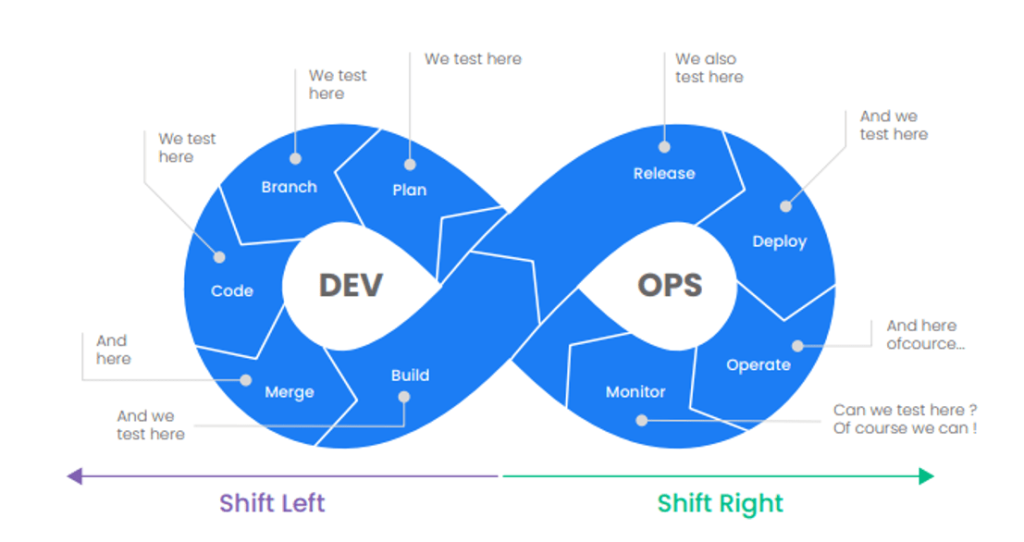
We did an assessment of different mobile app testing teams of our clients that worked with us to figure out a pattern in their testing approach.
We found that enterprises need to achieve a continuous stage where testing teams should rely on an internal or external cloud-based lab. Rapid automation is implemented at the core and teams should be able to run tests in parallel on unlimited devices. CI integration becomes continuous, which means automated test runs at every stage of development. If you want to know more about this you can refer to this whitepaper.
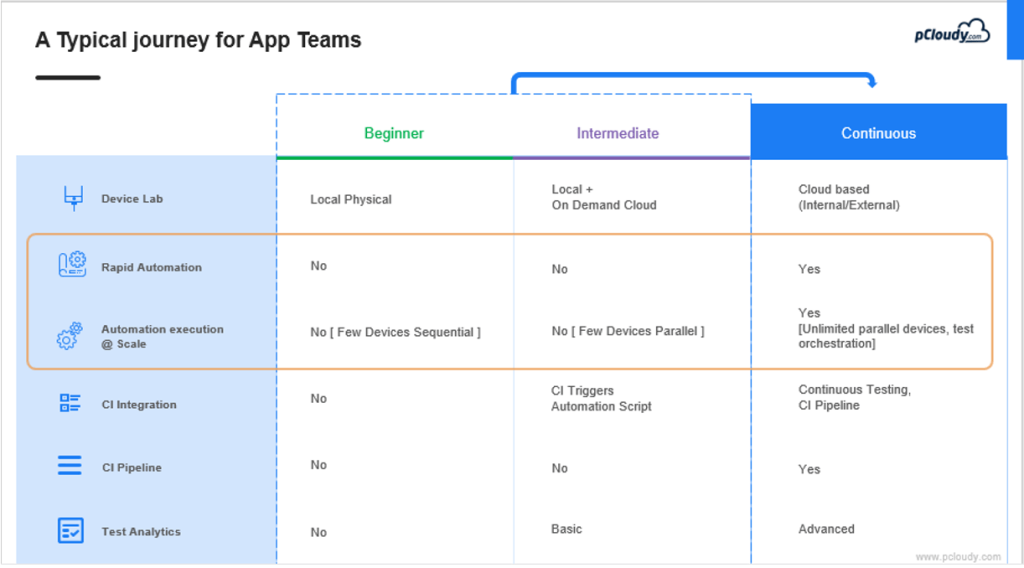
- Rapid Automation:
To achieve rapid automation, we need to focus on three strategies; the speed of test creation, execution stability, and speed of test execution.

Step 01 –
Automation pyramid: To increase the speed of test
creation or in-sprint automation, you need to build your automation pyramid. In most of the organizations, testing teams focus on the UI tests but not on unit testing. It’s a known fact that unit tests are more stable as compared to UI tests. Building the automation pyramid in the initial stages of testing will ensure that there is more focus on the Unit and API testing. This will reduce the execution time and test flakiness.

Step 02 – In-sprint test creation:
There are various techniques to build a successful automation strategy. Here we will showcase the BDD, ATDD, and Gherkin approach. In this approach, the acceptance criteria are defined by the BA team along with the test team and it is written in the form of a Gherkin file.
So, with this kind of acceptance criteria, developers and testers will be on the same page.
Step 3: Smart test creation techniques
Creating a script quickly is not enough if the scripts are not stable. If this is the case, then you will experience flakiness in testing. To do this you can use some smart techniques like having an alternative to Xpath, using techniques that leverage technologies
like AI for object recognition, or maybe smart sync for asynchronous app behavior.
We have technologies that use AI algorithms where we don’t need to write things from scratch for automation. we have used an Appium script for a situation where objects are not identifiable by other properties.
- Visual
Testing
While it’s clearly important to test the functional elements of your application, some teams will make the mistake of not paying enough attention to visual validation.
Visual testing requires the tester to consider how the application looks in addition to how it works. Often times, the UI of an application can pass a functional test, while design elements that are visually defective can go under the radar.
This becomes important as we look at responsive design and consider the myriad of different devices, browsers, and operating systems. If an application is not built to be responsive, design elements may suffer on different screen sizes.
Visual bugs can be annoying or unpleasant to users, but they can go beyond inconvenience to be more severe. In fact, visual inconsistencies can affect the user journey in a way that makes it difficult or even impossible to complete their intended actions even though the test is functionally proficient.
Manual visual testing is important, but humans can mistake too. Automated visual testing becomes too important here.
Automated visual testing uses software to automate the process of comparing visual elements across various screen combinations to uncover visual defects.
Automated visual testing piggybacks on your existing functional test scripts running in a tool like Selenium Webdriver, Cypress, WebdriverIO, or Appium. As your script drives your app, your app creates web pages with static visual elements. Functional testing changes visual elements, so each step of a functional test creates a new UI state you can visually test.
5) Advanced Testing Capabilities:
Voice-enabled apps are quite common these days as enterprises are trying to make it easier for users to control the app. Google was the first widely used app that The idea of IVAs is not new and we have seen it in many Sci-Fi movies too. Take the example of Weebo from the movie Flubber. It was a flying robot assistant who recognized voice commands and helps perform daily tasks. With more and more apps coming up with chatbots and voice features, platforms with advanced testing capabilities that supports voice, touch and gesture all at the same time becomes mandatory. You can watch this video to find out more about this one-of-a-kind feature audio interaction testing with pCloudy.
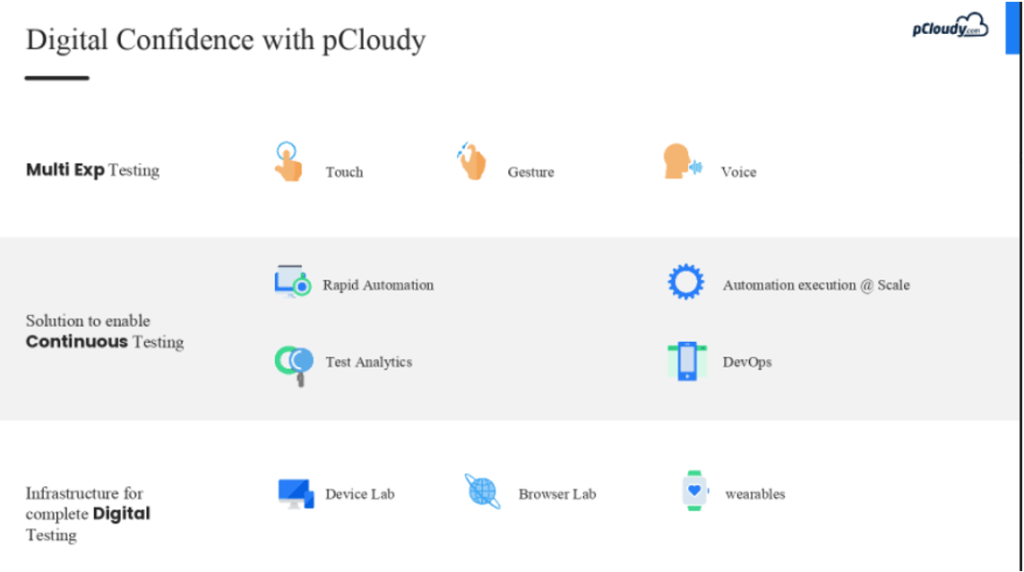
What MXDP Holds For The Future?
Gartner surveyed, by 2023, more than 25%
of the mobile apps, progressive web apps and conversational apps at large enterprises will be built and/or run through a multiexperience development platform.
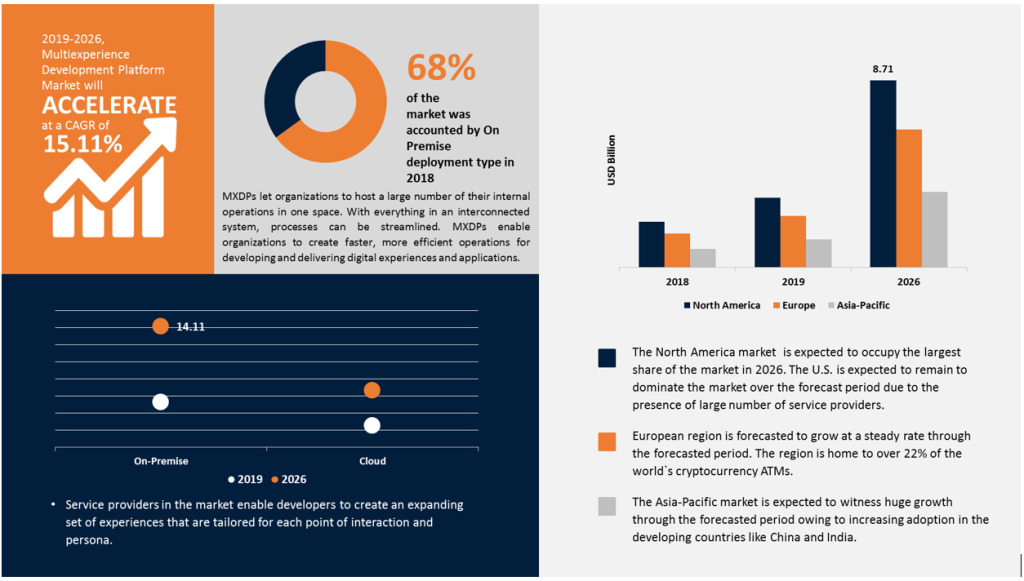
If you are looking for a reliable,
secured and scalable testing platform for testing your multiexperience development testing apps, then you can simply drop up an email at info@pcloudy.com and we will get back to you in an instant to discuss your requirements in detail.





 August 30, 2024
August 30, 2024

 December 28, 2022
December 28, 2022






